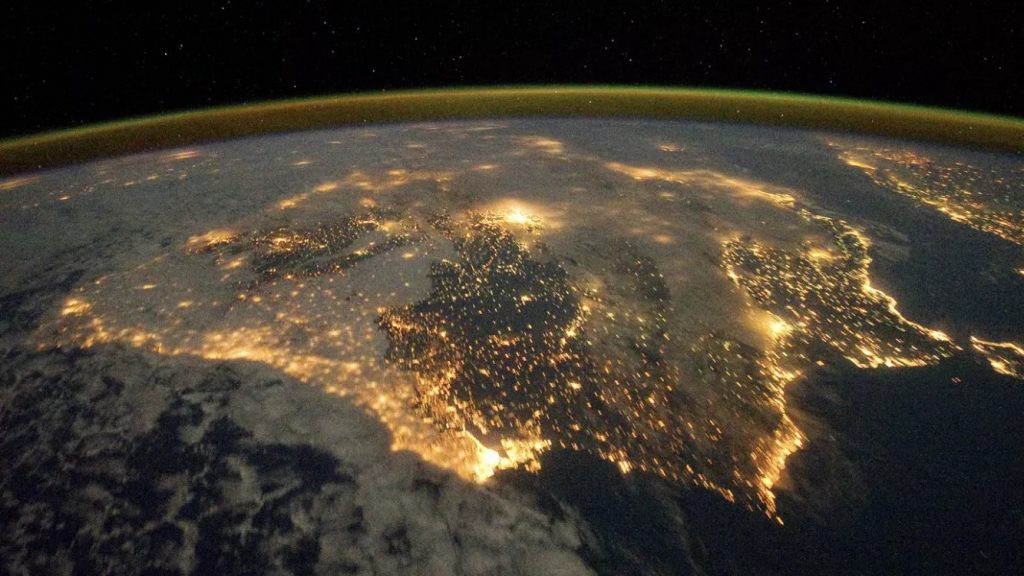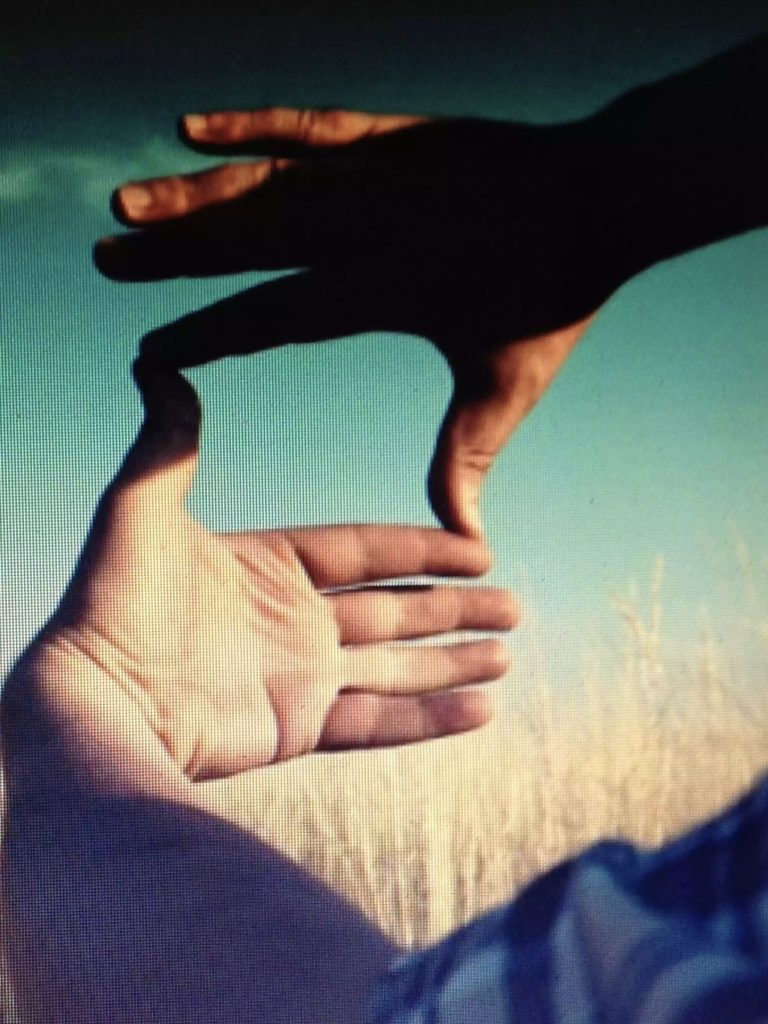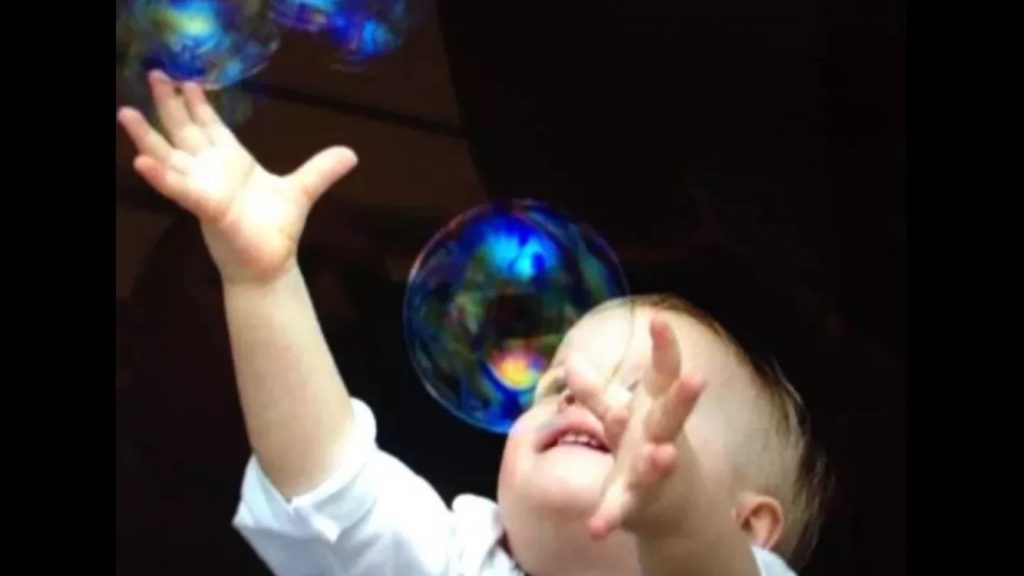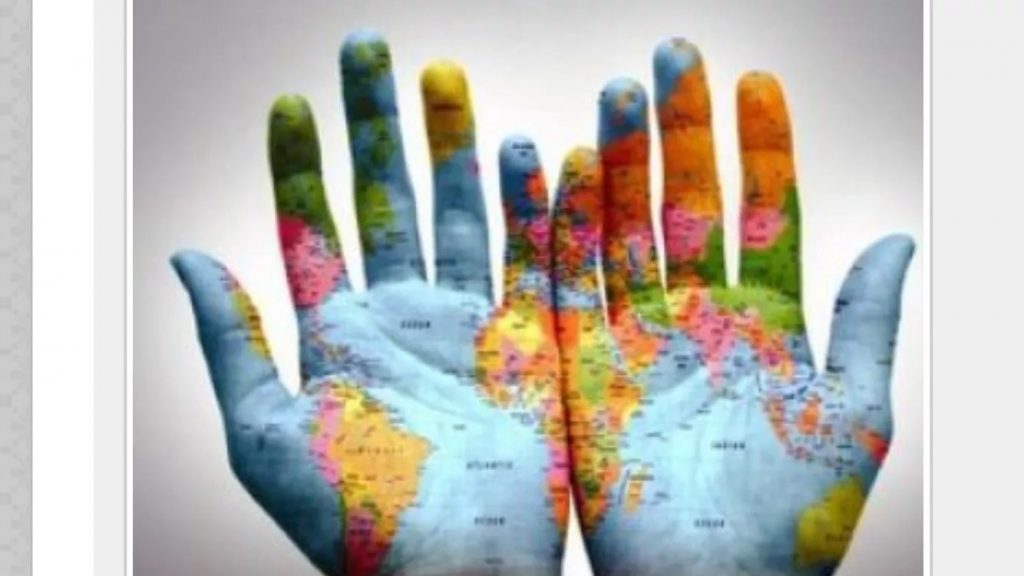D A R E
we believe that there’s more that connects us
than we are aware. . .
D A R E
BELIEVE IT
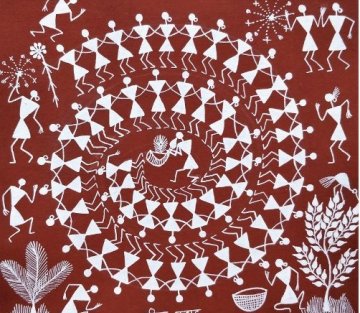 and D A R E
and D A R E
more to
Live Like It. . .
Because in the end. . .
THERE IS ONLY US
MORE THAN RELATIVE
A letter from Albert Einstein to his daughter, Lieserl, who donated 1,400 letters written by him to the Hebrew University, with orders not to publish them until 20 years after his death.This is one of them, to her.When I proposed the theory of relativity very few understood me. What I will reveal now to mankind will also collide with the misunderstanding and prejudice in the world.I ask you to guard the letters as long as necessary, decades, until society is advanced enough to accept what I will explain below.There is an extremely powerful force that, so far, science has not found a formal explanation to. It is a force that includes and governs all others, and is even behind any phenomenon operating in the universe, and has not yet been identified by us. This universal force is LOVE.When scientists looked for a unified theory of the universe they forgot the most powerful unseen force. Love is Light, that enlightens those who give and receive it. Love is gravity, because it makes some people feel attracted to others. Love is power, because it multiplies the best we have, and allows humanity not to be extinguished in their blind selfishness. Love unfolds and reveals. For love we live and die. Love is God and God is Love.This force explains everything and gives meaning to life. This is the variable that we have ignored for too long, maybe because we are afraid of love, because it is the only energy in the universe that man has not learned to drive at will.To give visibility to love, I made a simple substitution in my most famous equation. If instead of E = mc2, we accept that the energy to heal the world can be obtained through love, multiplied by the speed of light squared, we arrive at the conclusion that love is the most powerful force there is, because it has no limits.After the failure of humanity in the use and control of the other forces of the universe that have turned against us, it is urgent that we nourish ourselves with another kind of energyIf we want our species to survive, if we are to find meaning in life, if we want to save the world and every sentient being that inhabits it, love is the one and only answer.Perhaps we are not yet ready to make a bomb of love, a device powerful enough to entirely destroy the hate, selfishness and greed that devastate the planet.However, each individual carries within them a small but powerful generator of love, whose energy is waiting to be released.When we learn to give and receive this universal energy, dear Lieserl, we will have affirmed that love conquers all, is able to transcend everything and anything, because love is the quintessence of life.I deeply regret not having been able to express what is in my heart, which has quietly beaten for you all my life. Maybe it’s too late to apologize, but as time is relative, I need to tell you that I love you, and thanks to you I have reached the ultimate answer! “.Your father,Albert EinsteinHmmmmmmmmmmmmmmmmmmmmmmmm. . .
kind of makes you think
that everything’s not so relative. . .
IT IS MORE
. . .SO MUCH MOREwhich means
which means
we can meet in the land of MUCH MORE
living as Caring Catalysts
who all understand and teach
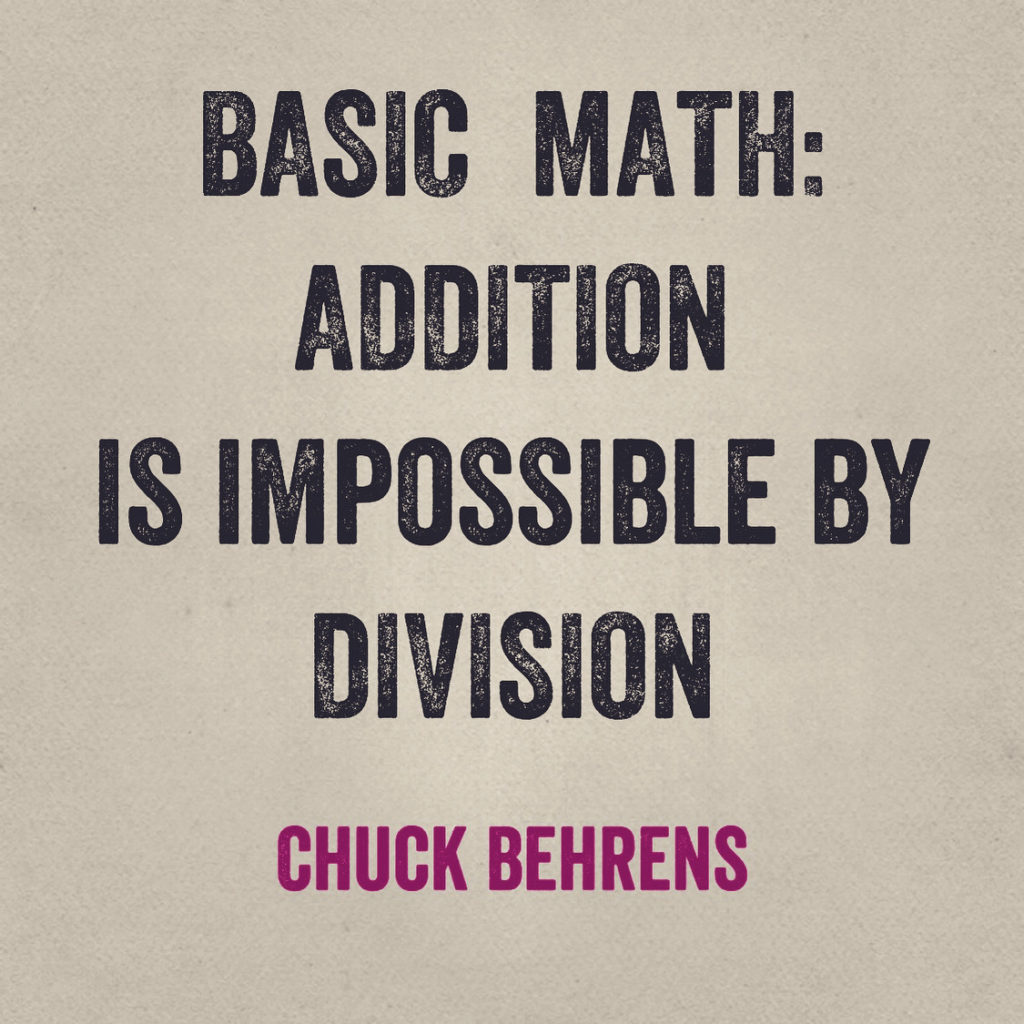
Life is short, 🔴 ⚫ 🔴
and we have too little time
to gladden the hearts of those
who travel the journey with us.
So be swift to love,
and make haste to be kind.
🔴 Henri-Frédéric Amiel
Swiss Writer 1821-1881
KAZE NO DENWA (Phone of the Wind)
“Hello. If you’re out there, please listen to me.” On a hill overlooking the ocean in Otsuchi Town in northeastern Japan is a phone booth known as the “Telephone of the Wind.” It is connected to nowhere, but people come to “call” family members lost during the tsunami of the 2011 Great East Japan Earthquake. Many visit the phone booth including a mother and 3 children who have lost their father. This documentary looks at the unique role that this phone is playing in helping the grieving process of many.
KIND OF CHILLING, huh. . . ?
QUESTION:
WHO WOULD YOU CALL
on the Wind Phone
Kaze no denwa (phone of the wind)
curling whispers from the depths of the earth
carried by the wind
through every crack and crevice
finally reaching my ear
i’ve missed your smile
your warm glow
gentle touches
please come back to me
i want to hear your voice again.
in a little town
on the coastline of Japan
stands a white phone booth
in a small backyard
in the booth is a telephone
rotary, the clicking numbers
line going nowhere
but the wind carries words
of the lost loved to us
so we can speak to them again
“grandpa, are you well?”
“i won a prize in school today!”
“is it cold over there?”
maybe i can’t hear your voice
for real again
but
if for one instant
i could say “i love you”
i’d be happy.
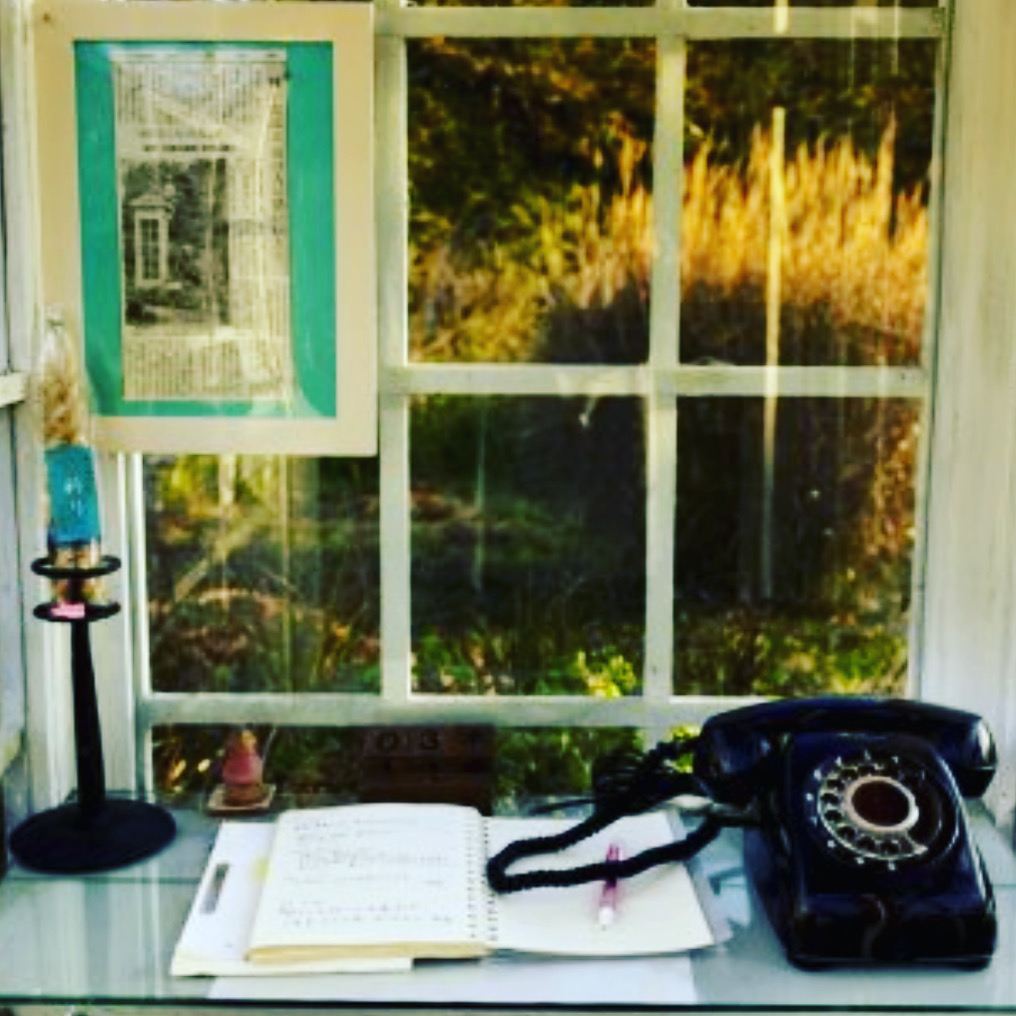
In Otsuchi, Japan, there is a telephone booth with a rotary phone with an unconnected phone line. It was built by Itaru Sasaki after his cousin died in 2010 as a way to talk to him and have closure. Many from Otsuchi use the phone to talk to loved ones lost in the 2011 Tohoku earthquake and tsunami. Some come for one long talk to say things they could not, and some regularly visit to talk to the deceased about everyday things. It’s become a way to connect to the past and the one’s they’ve lost, since many Japanese do not usually tell people that they love them often to their face. It’s a way to lay regrets to rest. Sasaki said that he wanted the line to not connect to anything, so that his words would be carried on the wind to his cousin. And so, the wind phone remains.
. . .R E M A I N S
to let us know that
L O V E
is the one thing
IN AND OUT OF THIS WORLD
that CONNECTS US
and with or without a phone
it’s the clearest connection
you’ll ever experience. . .
Now,
about THAT Call. . .
get to dialing
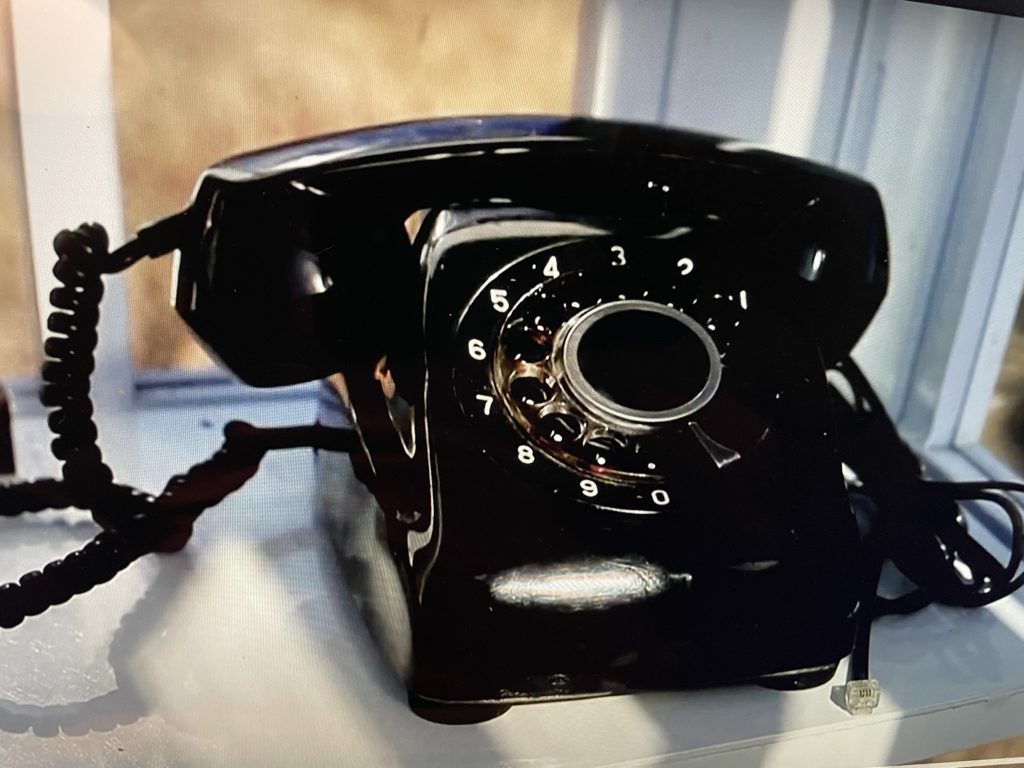
TOUCHING ART
| Please Touch the Art |
| This compelling video tells the story of an artist, Andrew Myers, who is so moved by a blind man’s joy at “feeling” three dimensional art that he is inspired to create three dimensional portraits to be experienced by people who are blind or visually impaired. Why is touching artwork so taboo? According to the producers of the film, “Prior to the mid-1800s, tactile interaction was commonplace for visitors experiencing collections of art, but as museums of art evolved, rules forbidding touch became the norm.” In this film, Myers surprises George Wurtzel, a blind artisan working in wood, with a portrait. Wurtzel delights in sharing his portrait with his visually impaired students at Enchanted Hills Camp as he teaches them by example how to work as a blind artisan. Wurtzel’s philosophy that “your life is what you decide it will be” permeates the film. |

It is such a simple simple question with such a profound and almost on answerable reply:
WHAT MAKES YOUR LIFE MEANINGFUL?
Is your life ultimately what you decide you want to make it to be or what OTHERS decide they’d like to make you be?
We are all severely handicapped
We are blind
We are deaf
We are mute
And because of THAT
Know a darkness;
Know a stillness;
Know an utterlessness
that can’t be described only experienced
And sadly, often is
And even more sadly,
Often
NEVER HAS TO BE
And The cure is when we remedy that
first of all and ourselves
we also heal it for others. . .
Test THAT
GO AHEAD
TOUCH
TASTE
SEE
HEAR
SMELL
S E N S E
beyond what
Fingers
Eyes
Noses
Mouths
Ears
can ever achieve and the
Go full on artist
Be artisan enough
To share THAT with OTHERS
So that you become the
a r t
And not just simply the artist….
TOUGH COMPASSION
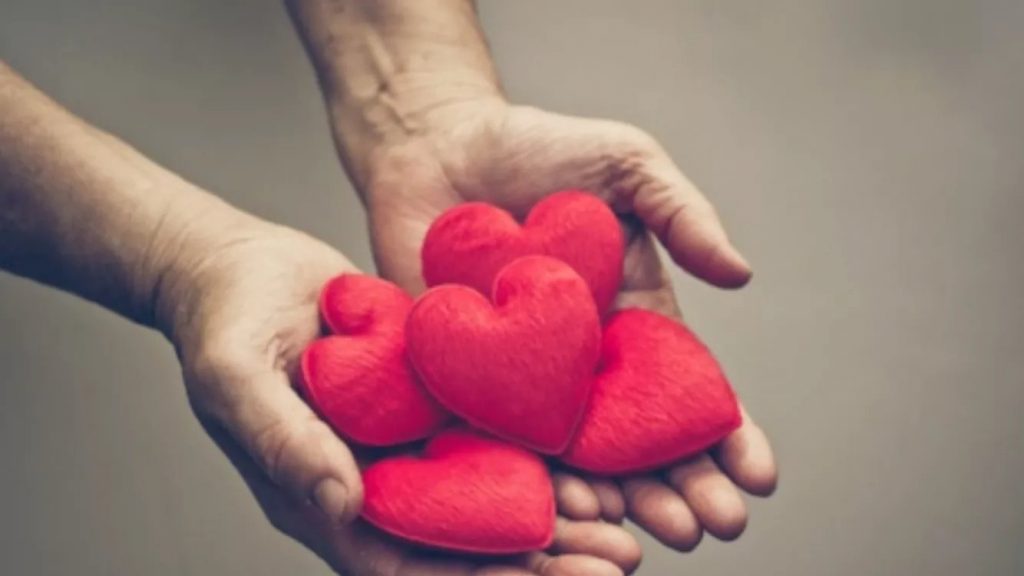
I’ve never been a big fan of
TOUGH LOVE
mostly because I
SUCK LIKE A STRAW
at showing/doing
TOUGH LOVE
so when I heard about
TOUGH COMPASSION
well. . .
What Does “Tough Compassion” Look Like in Real Life?
Tough compassion means speaking up, setting boundaries, and making uncomfortable choices for the greater good.
ELIZABETH SVOBODA, is a writer in San Jose, CA, and a regular contributor to Greater Good. She is the author of What Makes a Hero?: The Surprising Science of Selflessness. Her newest book, for kids, is The Life Heroic. And she took a TOUGH Look at TOUGH COMPASSION
On a podcast episode, psychologist and GGSC founding director Dacher Keltner described the idea, explaining how some contemplatives practice a form of kindness with a decided edge.
“In the deeper traditions of compassion, like a lot of the Buddhist traditions, they have an idea of tough compassion—to step in and, in a good way, guide the person to a different form of behavior or out,” said Keltner.
The concept seems so at odds with the way most Americans, especially women, are socialized to think about compassion. The compassion-centered lifestyle sketched in breezy Insta posts involves attending idyllic retreats and practicing meditation. If compassion were a Pantone Color of the Year, it would be whispery rose quartz.
In short, our culture presents a clear picture of what compassion is supposed to look like. And giving someone else an honest piece of our minds isn’t it.
It might be time to paint a new picture of compassion. When it comes to reducing suffering in the world, an uncompromising approach to compassion often trumps a pastel-hued one—and it’s an approach you can try when other attempts to engage with difficult people fail.
“The Dalai Lama always had this greater good analysis,” Keltner later told me. “Like, ‘What does it bring about? Is being hard in the moment going to bring about greater well-being or kindness for a lot of people?’”
The case for tough compassion
Tough compassion is gaining traction because the rose-quartz version is proving so unequal to the present moment, which has been defined by human failures to meet challenges posed by the pandemic, widespread inequality, and climate change.
Of course, there will always be a “soft” side to compassion. It’s always crucial to learn how to be a calm sounding board or comfort grieving loved ones. But warm and fuzzy compassion has little power to sway relatives who spout conspiracies, stop close friends from radicalizing online, or embarrass leaders who tout equality while harvesting the fruits of privilege.
In the Buddhist contemplative tradition, the goal of true compassion is to find ways to promote the least suffering for everyone. In this broader framing, nodding along with someone’s bigotry, bullying, or falsehoods for the sake of preserving that relationship is the opposite of compassion. It interferes with peace-building on a societal level, even though it might seem on the surface like a nonviolent act.
If you’re a parent, you probably practice small-scale tough compassion on a daily basis, vetoing pre-dinner snacks or enforcing homework time before kids go out. Larger-scale tough compassion flows from a similar source: the willingness to bear—and even inflict—some discomfort in the moment to promote longer-term well-being.
“You have this sense, and you’re in the position to assume, that this is a struggle they have to face,” Keltner says. “It’s good for them.”
The Dalai Lama has spoken of the importance of this kind of tough love. It means that if your aunt makes an offhand racist remark, or your work buddy insults a colleague, tough compassion involves speaking up—without rancor, but with conviction—if your goal is to promote less suffering for all.
“By withdrawing from the conversation, you don’t force the other person to really have to encounter a different set of values,” says Medical College of Wisconsin psychologist Zeno Franco, whose research focuses on community engagement.
In committing to tough compassion, you buy into a certain kind of risk-benefit calculus. You accept the discomfort involved in hopes that the other person will consider a different way of engaging, one that will carry over into her interactions with others, and perhaps even their interactions with those close to them.
“Our actions implicate a lot of people,” Keltner says. “You’ve got to step back and think about all the utilities and consequences downstream.”
Tough compassion in practice
It’s one thing to endorse the tough-compassion approach and quite another to try to make it work. What does it actually look like to show uncompromising compassion in the moment? And when someone in your life does something that’s actively harmful, what’s the best way to guide them without outright coercing or controlling?
In Franco’s view, tough compassion involves conveying that you value someone as a person while disagreeing openly with what they are doing.
When he calls loved ones out for hateful or harmful behavior, he’s not shy about saying what he thinks. But at the same time, “I try to remain accessible as a human being who can be vulnerable, who can be hurt, and who can appreciate the person,” he says. “Part of that is thinking about how to respond in a way that is not designed to escalate, but almost to reach past the ‘facts’ or points that they are making to where what they are saying impacts me at an emotional level.”
A powerful way to convey this emotional impact is through storytelling, says Juliana Tafur, a filmmaker and founder of the Listen Courageously project. If you want to hold a relative accountable for homophobic remarks, for instance, you can describe the effects of that kind of behavior on people close to you: “My good friend is gay, and she hears insults like that all the time. She’s also been attacked in public. Because of that, it’s hard for her to trust that people are going to respect her as a human being.”
With storytelling, you can take a tough stance and show the other person the results of their actions without launching a direct attack. When you do this, “you’re really communicating—in a way that is enveloped in compassion—your fundamental boundaries, what you can and cannot accept, and inviting the other person into that conversation,” says Tania Diaz, a psychologist at Albizu University. Studies show that this story-based approach can create significant change in people’s worldviews.
Even when you know you’ll create more lasting change through dialogue than exclusion, you may have to push past significant inner resistance to engage in these conversations. Showing any kind of compassion—even tough compassion—to a person who behaves harmfully can feel like a form of surrender, or like tacit acceptance of their behavior.
But from the broader perspective of reducing suffering, what might seem like fraternizing with the enemy can be a potent way to guide someone on to a less toxic path.
“A lot of people have this misunderstanding that, if I engage or listen, I am somehow going to be tainted, or I’m going to be influenced,” Diaz says. When she facilitates these conversations, she’s found that quite the opposite is true. “When you listen, truly understand, and get curious, it creates space for the person to think a little bit differently.”
To avoid shaming the other person into submission—a tactic studies show can backfire by making people withdraw from the situation—you can go on to explain how a change of course would be a win-win scenario, for the other person as well as for the world at large.
“I show them what life might be like after they change and explain the positives,” says Dian Grier, a licensed clinical social worker in Mojave, California. That might mean pointing out that your homophobic relative will have a much better relationship with gay nieces and nephews if he chooses to engage with them differently.
Holding fast
Perhaps the biggest challenge of practicing tough compassion is staying internally grounded while emotional storms rage. When you take a stand, other people may fire back with remarks that send your heart hammering. If you’re not prepared, that physical reaction can propel you straight into a “lizard brain,” fear-based mindset where you’re more likely to fall back on old, reactive rules of engagement.
Tough compassion, by contrast, is like an anchor pole that holds fast no matter how hard the rope tugs on it. “In those moments, I’m trying to be fully present and yet no longer upset,” Franco says. “The intent of every word is thought through to take the argument almost to a different place.”
To hone this kind of in-the-moment composure, it can help to write down some thoughts beforehand about what you want to say to someone or the kind of stories you want to tell. Then, once you’re up for it, schedule a real-life conversation or Zoom. This face-to-face connection often feels more humanizing than a long text thread, and deciding where and when it happens can help you feel more in control of the process.
But while tough-compassion conversations can be fertile ground for shifting others’ perspectives, your own well-being should always remain front and center. To steer clear of potentially traumatic encounters, “you need to know if the other person is in a position to be willing and able to engage in that conversation with you,” Tafur says. “And I think you’ll know that right off the bat.”
If someone ridicules your attempts at dialogue or continues to sling insults, “the tough-compassion act is to leave or disengage,” Keltner says. Exiting from a harmful situation can be its own form of uncompromising truth-telling.
In line with the Buddhist teaching of dropping attachment to results, the tough-compassion approach is simultaneously about holding fast and letting go. At its core, tough compassion is about “creating space for dialogue to unfold,” Diaz says. “Ultimately, that person decides if they’re going to shift.”
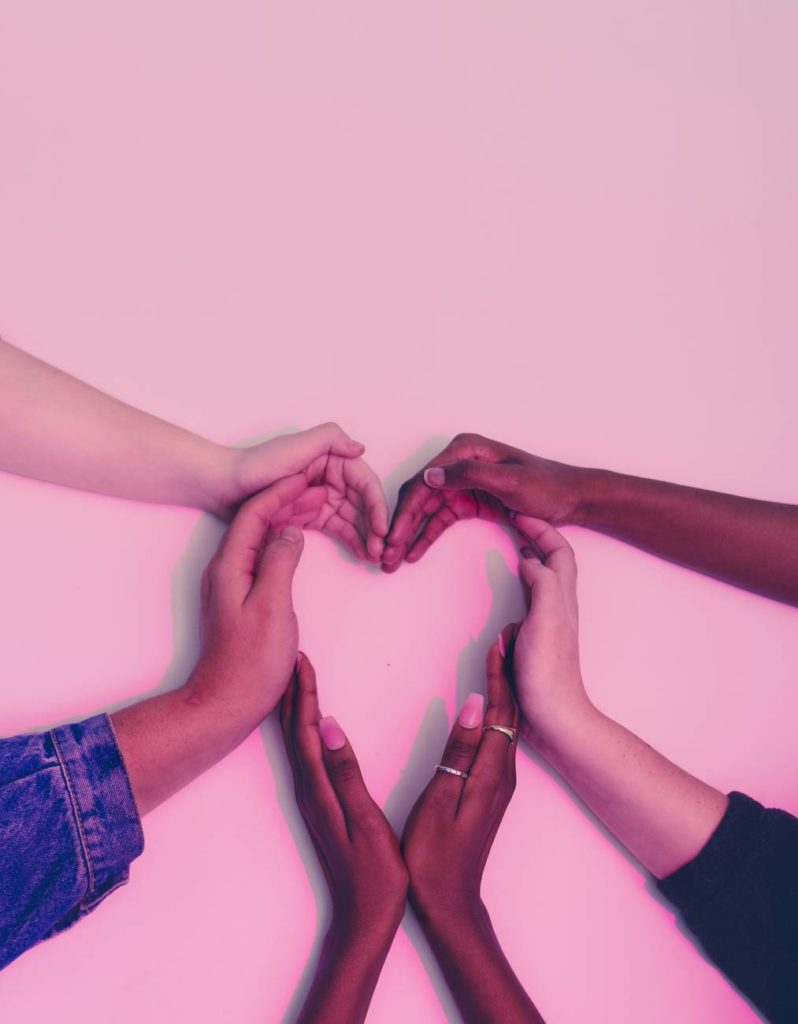
So. . .
are you a
TOUGH COMPASSION
Champion. . .
For the Good of ALL
it’s not just a mere Question
anymore
. . .it’s desperately in need of an
A N S W E R
LOOKING BACK (to see ahead)
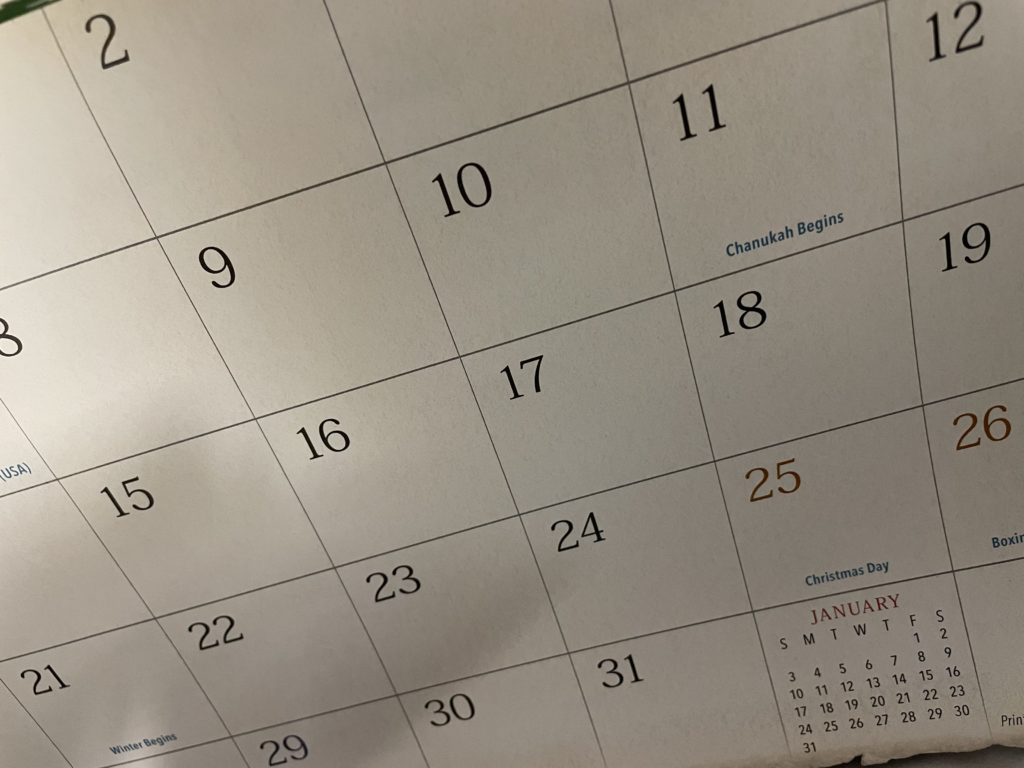
WHAT A YEAR
is a huge understatement, huh. . . ?
B U T
this is THAT time
when we all look back
TO SEE AHEAD. . .

OR WAS IT. . . ?
Sometimes are most painful experiences
turn out to be our greatest lessons
L I K E :
The Top 10 Insights from the “Science of a Meaningful Life” in 2020 from The Greater Good Staff
Their team names the most provocative and influential findings published during this past year.
In 2020, the study of well-being took on new meaning. The COVID-19 pandemic created a mental health crisis that is affecting people in all corners of the globe. In the United States, Americans have faced intense political polarization and a reckoning around racial justice. Many of us are left wondering how we can move forward toward a better future.
As the year rolled on, some well-being researchers were quick to turn their lens on the pandemic itself, tracking how people were doing and testing ways to help us cope better. Others continued to study how we can connect, bridge our differences, and build more just communities.
This year’s top insights speak to the moment, from concrete tips about how to bond with a friend to broader truths about how societies respond to diversity over time. All of them point toward strengths and solutions amid isolation, illness, and conflict. The final insights were selected by experts on our staff, after soliciting nominations from our network of more than 300 researchers. We hope they remind you how we’re all connected—and perhaps bring you a little bit of hope.
Rich and varied experiences may be an overlooked key to a good life

When we strive for a good life, what are we actually seeking?
“Happiness” is the simple answer for many people. In general, we want to feel satisfied with life, and experience more pleasantness than unpleasantness. We also strive for meaning and purpose—the sense that we matter, belong, and are engaged in service to something beyond ourselves.
Until now, psychological science has been focused on these three dimensions of well-being, which are technically called “evaluative” (satisfaction with our lives), “hedonic” (positive and negative feelings), and “eudaimonic” (meaning in life).
Now, researchers led by the University of Virginia’s Shigehiro Oishi have proposed another dimension of well-being that has not been carefully studied yet: psychological richness.
Psychological richness involves having new, interesting experiences that promote curiosity or transform how you think. People with psychologically rich lives experience more intense emotions—positive and negative—and are more open to novelty and uncertainty. They might choose to live abroad, seek awe in nature, or explore complex intellectual problems. In contrast, the researchers suggest, happy or meaningful lives can be more routine, and possibly even boring.
In their paper, published in Affective Science, the researchers asked people from nine countries to journal freely about their ideal life. Then, the researchers asked them to analyze it: How happy, meaningful, or psychologically rich was it? The ideal life they envisioned tended to be very happy and meaningful, but also moderately eventful, interesting, and surprising—in other words, psychologically rich.
When people were forced to choose between the three types of ideal lives, most chose a happy or meaningful life—but 7-17% of people chose a psychologically rich life.
To get another window into people’s greatest aspirations for their life, the researchers surveyed people from the United States and Korea about their biggest regret. Here, 28% of Americans and 35% of Koreans said their lives would be psychologically richer (rather than happier or more meaningful) if they could undo this regret, suggesting that psychological richness is a dominant life goal for them.
These studies offer clues about a key value we hold that may not be captured by common conceptions of happiness or meaning—it has more to do with adventurous and thrilling experiences. “Taking the psychologically rich life seriously will deepen, broaden, and, yes, enrichen our understanding of well-being,” the researchers write.
If you want to connect with someone, call rather than text

As the pandemic isolates us from loved ones, many of us are trying to stay connected through texting, email, and social media, even taking the opportunity to reconnect with long-lost friends.
But if our goal is to feel closer to people and enjoy our conversations more, we’re best off picking up the phone, according to a new studypublished in the Journal of Experimental Psychology. There seems to be something special about hearing another’s voice that makes for more satisfying social interactions.
In the study, participants imagined having a conversation with a friend they hadn’t been in touch with for at least two years and made predictions about how it would feel to connect by phone versus email.
After being randomly assigned to connect with their old friend via phone or email, they reported back on the experience. Though most people thought talking by phone would be more uncomfortable, those who spoke on the phone were happier with the exchange, felt closer to the other person, and felt no more uncomfortable than those who’d emailed—even if they had preferred to email.
“We think it’s going to be awkward to talk to somebody, but that just turns out not to be the case,” says lead author Amit Kumar. “Instead . . . people form significantly stronger bonds when they’re talking on the phone than when communicating over email.”
The same result held true when the researchers had participants do a conversation exercise with strangers using either video chatting, audio-only chatting, or text-chatting. People who used media that included the voice had more satisfying exchanges and felt closer to their new acquaintance than the text-chatters.
Why? Likely it’s because our voices communicate a wide range of emotions, helping others to read us better and to feel like they really know us. Hearing someone’s voice enhances our empathy for them, too—in some cases, even more than video chatting.
So, while texting can be useful, it’s not the best way to get the most out of socializing. If we’re looking for greater happiness and connection, we should give someone a call.
Acting like an extravert can make you happier

Forty years of research has found that introverts tend to experience less frequent positive emotions than extraverts. Does that mean they’re doomed to be less happy than their bubbly, loquacious counterparts?
Not necessarily. In fact, a paper in the Journal of Experimental Psychology: General suggests that anyone can experience some of the benefits of being an extravert. All you have to do is act like one.
Researchers Seth Margolis and Sonja Lyubomirsky asked 131 undergraduate students, mostly Asian and Latino, to spend one week behaving like an extravert and one week behaving like an introvert (or vice versa). Acting like an extravert meant being talkative, assertive, and spontaneous, while acting like an introvert meant being deliberate, quiet, and reserved.
Based on surveys the students completed every few days, they experienced more positive emotions and felt more connected to others, competent, autonomous, and in “flow” during the extravert week compared to the introvert week.
This was true of both introverts and extraverts alike (although in the one previous studywhere people acted extraverted for a week, introverts didn’t benefit as much). The relationship was even stronger for people who wanted to be more extraverted, and for Latino students—perhaps, the researchers speculate, because extraversion is valued more in their culture.
As an introvert, you might object to the implication that to be happier, you shouldn’t be yourself. But the researchers take a more flexible view of personality and behavior than that. Research suggests that our personality can change over time, and how introverted or extraverted we act can vary week to week. Although introverts usually don’t believeacting extraverted will make them happier, it usually does.
At the very least, it can be something to experiment with—the same way you might try gratitude journaling even though you aren’t naturally very grateful. You don’t have to be the life of the party or spend all your free time on Zoom; you just have to try expressing yourself and engaging more with others.
After all, many extraverted behaviors involve connection—and research suggests that relationships are one of the most fundamental keys to happiness.
Cooperating with each other may encourage kids to work harder

It’s a message many kids get from the time they’re young: If they want to succeed in life, they need to look out for themselves.
But in January, a study published in Psychological Science challenged that conventional wisdom, suggesting that kids are more likely to achieve a goal if they know that someone else is relying on them.
In the study, researchers had two five- or six-year-old children meet and do a shared task before separating them into different rooms. Then, before leaving the room, the researcher left a cookie in front of each child and told them they’d get two cookies if they could resist eating the first one. In some cases, the children were told that they andthe other child both needed to resist the cookie to get the bigger reward.
The researchers found that kids who were cooperating to earn the reward were able to resist longer than those who only had to think about themselves—even though counting on another child meant less chance for reward.
“In situations where individuals mutually rely on one another, they may be more willing to work harder in all kinds of social domains,” says Sebastian Grueneisen, a coauthor of the study.
Interestingly, the kids in this study came from two very distinct cultures—the Western democracy of Germany and a small farming community in Kenya—with different values around independence and interdependence. This suggests that cooperation may be universally motivating when it comes to delaying personal gratification.
Given that resisting temptation is a vital skill across so many situations in life—from persevering at school to avoiding addictions—these findings suggest we should encourage kids to work together cooperatively more, for the benefit of all.
For a more empathic world, we need to choose empathy

Most of us think about empathy as an automatic response, like a parachute that deploys when we see someone in distress. Or we think of it as a skill, something we can hone by practicing perspective taking or deep listening.
But a new study suggests a missing piece of the empathy puzzle: motivation. Even when we have the ability to feel others’ pain or understand their perspective, we’re more likely to exercise it when we have a strong desire to do so.
This finding is especially relevant today amid all the social and political divides in the U.S. In addition to teaching people skills to bridge differences, this research suggests we also need to boost their motivation to empathize in the first place—and it points to a few ways to do so.
Harvard University social psychologist Erika Weisz and her team instructed college freshmen to write letters to struggling high school students about how empathy was in the high-schoolers’ best interest—that it would help them connect with others, for instance. This activity was designed to boost the letter-writers’ own motivation to empathize, Weisz explains. “When we ask a participant to endorse a statement to another person, they tend to endorse those beliefs themselves.”
After they wrote the letters, the students seemed to get better at reading other people’s emotions. Up to two months later, they showed higher accuracy when asked to describe what people in a video were feeling, compared to a control group who wrote letters unrelated to empathy. Some also reported making more close friends at college, possibly due to their empathic savvy.
Along the same lines, a University of Toronto study this year reiterated the finding that our empathy depends on our motivation and explored other ways to boost our identification with people.
Results like these suggest that we can encourage empathy by focusing on the rewards it offers. “A lot of people think of empathy as a static trait,” Weisz says. “Targeting motivations imparts lasting changes.”
Witnessing gratitude and kindness helps bond people together

Gratitude is a premier emotion for bonding two people together. It creates a warm feeling of trust, encouraging more closeness and care.
But a study published this year in the Journal of Personality and Social Psychology suggests that these effects extend beyond the people involved in an exchange of thanks—all the way to people who only observe expressions of gratitude.
In the study, Sara Algoe and her colleagues ran a series of experiments. Sometimes, participants saw written notes of thanks for a kindness done; other times, they watched a video of someone voicing how grateful they were for another person’s kindness and fine qualities.
In both cases, when people observed these expressions of gratitude, they were drawn to befriend the grateful person and the recipient of the gratitude, and they wanted to help them out, too. This suggests that gratitude can encourage ripple effects of positive social connection within communities.
“A whole group of people could be inspired to be kinder to one another,” says Algoe, “and through this interwoven kindness, the group itself could become a higher-functioning group.”
And witnessing kindness can have a similar effect, according to another study published this year in Psychological Bulletin.
In the study, Haesung Jung and her colleagues analyzed decades of experimental studies. The researchers found that being a bystander to kindness—whether we read about it or see it happen in front of us—makes us act kindly ourselves, even toward people not involved in the act of kindness.
“People resonate when they watch someone do something good,” says Jung. “The message that these prosocial behaviors are quite contagious is a really important message that people should know.”
Both studies suggest we should all try expressing more gratitude and being kinder to one another. Doing so has more far-reaching effects than we may have realized, helping to spread goodness and build greater social cohesion in our communities.
To get people to follow COVID guidelines, appeal to their care for others

The world is facing another surge in COVID-19 cases and related deaths. To effectively stop it requires more people to adhere to public health guidelines, including wearing masks and keeping physically distant—at least until a vaccine is widely available.
But how do we get people to comply with these measures? While it might seem that people would be most motivated to protect their own health, research suggests that isn’t necessarily the case. Instead, messages that appeal to our concern for others may be more effective.
In one study published this year, Harvard researcher Jillian Jordan and her colleagues compared how a large group of Americans responded to different public health announcements during the early months of the pandemic. She found that messages focusing on the need to protect others were more likely to inspire compliance with health measures than those focused on the need to protect oneself—a finding that resonates with prior studies.
“While people do care a great deal about themselves and are self-interested, people also care a lot about other people, and those social motivations are a big part of our behavior,” says Jordan.
Indeed, a study conducted in Sweden concluded that people who were more “prosocial” (kind and helpful, measured two years before the pandemic hit) were more likely than less prosocial people to follow distancing guidelines, stay home if sick, and buy face masks during early 2020.
Many other social factors drive us to follow health safety guidelines, too—including the compliance of those around you (social norms) and your social identity (especially your political identity—in the United States, at least). But our instinct for altruism is strong, if it’s tapped. That’s especially true when the outcome of our actions is uncertain but could hurt other people’s well-being.
That’s why many scientists are recommending that leaders always mention the importance of protecting others whenever they ask people to wear a mask, keep their distance from others, or take other precautions to prevent the spread of COVID. Doing so could encourage more people to take those steps—and help end the pandemic sooner for everyone.
We might care more about inequality if we question our underlying assumptions about poverty

Why in the world would anyone be for economic inequality, given how harmful it is to individuals and societies?
According to a new paper published this year in Nature Human Behavior, it comes down to “people’s judgments about why the poor are poor”—and the belief that inequality accurately reflects how hard individuals work.
First, Paul Piff and his colleagues surveyed people from 34 countries about whether they attributed poverty to unfairness in society (situational causes) or to laziness or lack of willpower (dispositional causes).
As the researchers expected, people who thought of the poor as lazy believed they deserved to be poor—and that the rich deserved to be rich, because they were so hard-working. According to another survey of Americans, the researchers found that situational and dispositional causes were not mutually exclusive in people’s minds. In other words, people could believe in both—and other research, cited in the paper, suggests that they’re often not even aware that they have these assumptions about poverty.
Next, the researchers conducted three experiments to see if they could stimulate people’s awareness about their own attributions and how that awareness could, in turn, affect their behavior. In the first experiment, they asked a geographically diverse group of about 1,000 American adults to simply write about people who are poor—or to write about why some people might not deserve to be poor. Primed to think about poverty and its causes, participants had the option to donate all, some, or none of their winnings in a raffle to a minimum-wage campaign.
Indeed, those who had been invited to think about the situational causes of poverty—such as racism, lack of education, or childhood trauma—were more likely to make the donation, and to express support for measures against inequality.
Taken together, the studies suggest that people can shift toward looking at poverty less as a failure of will and more as the result of social forces—but they need to be made aware of those forces through education and they need the opportunity to reflect on their own assumptions.
Social justice and individual happiness go hand in hand

This year, millions of people around the world took to the streets to protest the murders of George Floyd, Breonna Taylor, and other Black Americans. One of the most striking things about the protests was the diversity of who participated in them: They engaged people young and old, of all different races and ethnicities, in large cities and small towns. More people than ever seemed to feel that the movement was relevant to them, even if they themselves hadn’t been the victim of racial injustice.
A study published in early July, around the time that the protests were at their peak, suggests that they’re right, in ways that they may not have fully realized. For while it’s clear that a society should value social justice for its own sake, the study suggests that everyone benefits when societies are fairer. It turns out that countries with the highest levels of social justice have the happiest citizens, too.
In the study, published in the Journal of Community Psychology, researchers Salvatore Di Martino and Isaac Prilleltensky looked at social justice levels in 28 European countries. Indicators of social justice included equity around education and health care for ethnic minorities and the poor, non-discrimination policies, gender representation in government, and more.
The researchers then compared that data to how satisfied Europeans were with their lives, based on interviews with nearly 170,000 individuals. After ruling out other factors that might influence happiness—like age, gender, occupation, or a country’s gross national product—they found that living in a more socially just society was the second most important contributor to individual happiness. It only lagged in importance behind social capital—the strength of people’s relationships, trust in institutions, and civic engagement.
“Social relations are important for people’s happiness—one of the most important things,” says Di Martino. “But people should also realize that the conditions surrounding them—like living in a place that gives them opportunities or resources—are also very important.”
Building upon other research showing the importance of good governance and the role of social equity in personal happiness—even for the well off—this study bolsters the case that social equality matters to us all.
Living in diverse communities may reduce stereotypes—and improve well-being

More people around the world are living with more diversity than ever before, thanks to immigration and globalization. In a new paperpublished in June in PNAS, psychologists Xuechunzi Bai, Miguel R. Ramos, and Susan T. Fiske provide us with a hopeful message about the long-term prospects of diversity.
Their question: How does experiencing ethnic diversity change the stereotypes people hold? To find out, they ran a series of studies across over 12,000 people in 47 countries, including all 50 U.S. states. Across the board, they found that people in more homogeneous areas were much more likely to harbor stereotypes about people different from them, seeing them as less warm and competent. On the other hand, they write:
Countries and U.S. states with higher levels of ethnic diversity (e.g., South Africa and Hawaii, versus South Korea and Vermont), online individuals who perceive more ethnic diversity, and students who moved to more ethnically diverse colleges mentally represent ethnic groups as more similar to each other.
The paper highlights another bonus that comes with the decline in stereotypes: greater well-being. In the studies of Americans and students, they found that people in diverse communities both held fewer stereotypes and reported being more satisfied with their lives.
Why? That’s hard to say. There is some research that finds that diversity stresses us out if we don’t feel it’s a good thing. The researchers speculate that experiencing diversity also just broadens our horizons. A study from last year, for example, found that religious diversity provokes more conflict in the short run—but over time, people get used to the differences and learn to live with each other.
As ever, we need more research. But in the meantime, we can take hope from the implications of their result: “Individuals have in them the potential to embrace diversity—[which] should encourage societies to intervene against potential barriers to a peaceful coexistence.”

I Know. . .I KNOW
that’s a whole lot to take in
and try to digest
which is why looking back
TO SEE AHEAD
takes not so much special lenses
or even good vision
as a willingness
TO SEE
and
TO LOOK
honestly at where you’ve been
to even begin to understand where you’re going. . .
THE TAKE AWAY:
IT IS ALL A JOURNEY
and looking back
to walk forward
are the only
S T E P S
worth taking
(and the only ones most meaningful)
Too Soon?
Practicing gratitude
implementing it in our lives
is a major part in realizing the good we have already,
like right now
Y E S
even NOW
2020
(that NOW)
in the middle of a pandemic crisis
and yet to even say
WE ARE IN THE MIDDLE
of anything
is more than a fair chance
to make
TO BE
A Difference. . .
A real game changer. . .
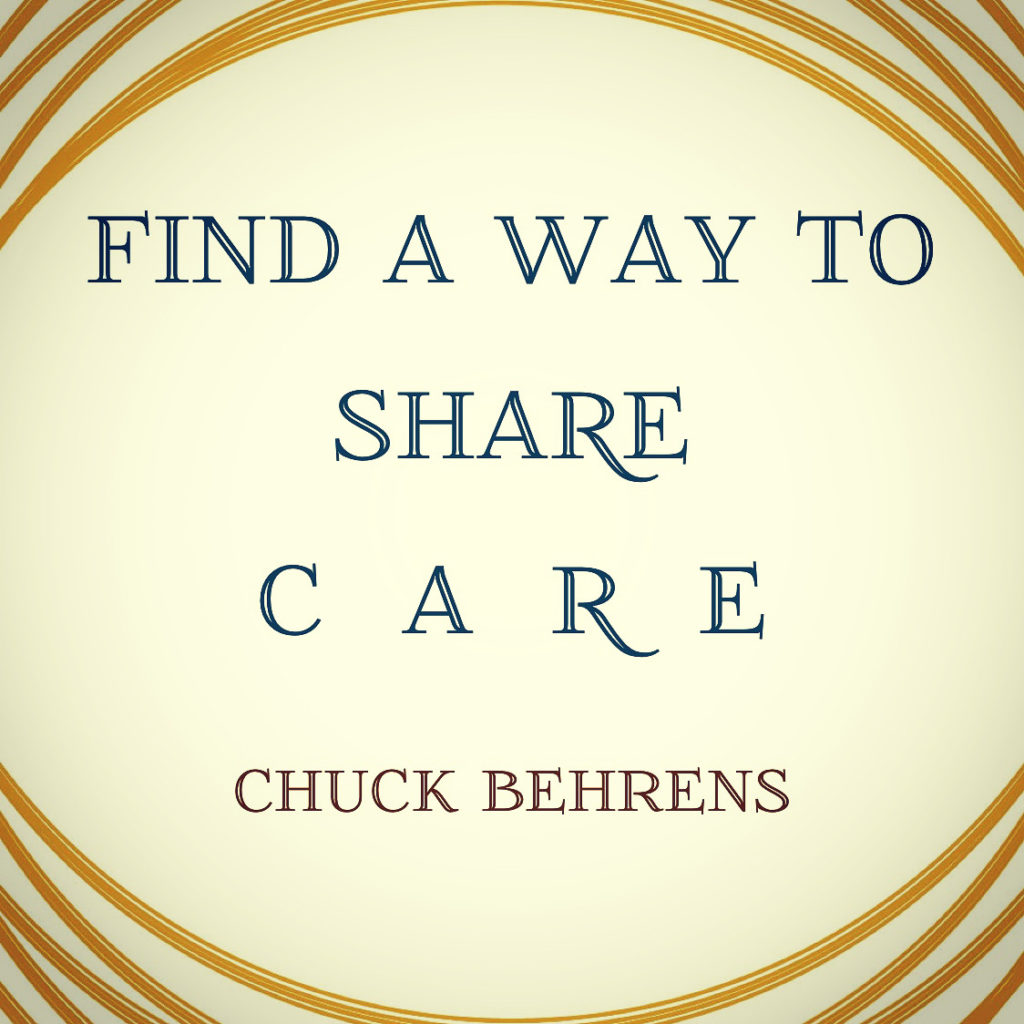
Here we are once again
(BUT REALLY BRAND NEW THIS YEAR)
getting to have a
THANKSGIVING
we’ve never quite experienced this year
in just 10 days. . .
Sure,
all of the fixings might be there
but our Thanksgiving Tables are
(no doubt)
going to look
going to feel
going to be
d i F f e R E n T
which really begs the question:
TOO SOON. . . ?
Is it ever too early
Too Soon
to be thankful. . . ?
Is there ever a time not to be grateful. . . ?
What tips the scales on your gratitude meter
and just when
. . .just when
was the last time that you tipped
Another’s scales?
Pssssssssssssssssssssssssssssssssssssssssssst. . .
Please tell me
I don’t have to give you
THE ANSWER. . .


The CONVERSATION
Michael W. Smith
is a Christian Artist
with a most worldly
ALL ENCOMPASSING
m e s s a g e
that goes way beyond
a piano note
or nicely worded lyrics:
Oh these days I’m at a distance
Sirens scream but I don’t listen
There’s a million distractions I can’t escape
Like I’m sleepwalking now but I’m wide awake
And the picture I painted I want to change
Right now
Bring me into the conversation
All my walls, you can see them shaking, yeah
I’m staring at you, hanging on every word you’re saying
Won’t you bring me into the conversation
One by one we’re separated
What I thought was love just looked like hatred
I’ve been losing myself trying to prove you wrong
And right now all I know is I can’t go on
So I’m stepping across all the lines I’ve drawn
Right now, right now
Bring me into the conversation (conversation, conversation)
All my walls, you can see them shaking, oh yeah
I’m staring at you, hanging on every word you’re saying
Won’t you bring me into the conversation.
I just wanna talk to you
I just wanna talk to you
I just wanna talk to you
I just wanna talk to you
I just wanna hear what you’re saying
Won’t you bring me into the conversation
All my walls you can see them shaking, oh yeah
I’m staring at you, hanging on every word you’re saying
Oh Won’t you bring me into the conversation
I just wanna talk to you
I just wanna hear what you’re saying oh yeah
I M A G I N E
DARE BELIEVE
UNDERSTAND
KNOW
The world could literally change
Be transformed
Come off it’s tracks
If we just said
“BRING ME INTO THE CONVERSATION”
“I JUST WANT TO TALK WITH YOU”
“TELL ME YOUR STORY”
“I REALLY WANT TO HEAR WHAT YOU ARE SAYING”

L I S T E N
l i s t e n
I just don’t want to talk with you. . .
I want to
Listen
TO HEAR
WHAT YOU ARE SAYING
Hmmmmmmmmmmmmmmmmmmmmmmmm of the Day:
Maybe before you bring me into the
c o n v e r s a t i o n
I need to prove to you
s h o w y o u
GIVE YOU
a reason
to do
S O
CONNECTED

When’s the last time you met a person. . .
I mean a brand new person in your life,
you’ve never previously have heard of or met. . . ?
How were you introduced
or did you put your hand out first and say your name
with your title or some other way that identifies you. . . ?
DARE YOU
try to connect
or be connected in
A N O T H E R
w a y

If you can move beyond the boring basics when you’re asked “What do you do?”, you’ll set yourself up for new relationships, opportunities and revelations, says introduction expert Joanna Bloor. . .
Mingling at a work event inevitably means being asked the question “What do you do?” over and over again. After years of repetition and conditioning, most of us respond with “I’m job title X at company Y.” And while this is the answer people expect, it’s also likely to linger in your new acquaintance’s mind only until it’s replaced by what the next person says to them.
“Answering with your title and company is the cultural norm. But when you do, you’re missing out on an opportunity for the other person to know who you actually are. You are not just your job,” says Joanna Bloor, CEO of Amplify Labs. She specializes in helping people discover and articulate what makes them distinctive so that they can form deeper connections with others.
And it all starts with how you introduce yourself.
Bloor’s own answer demonstrates the power of an original response. If she answers “I’m CEO of Amplify Labs,” her questioner will probably go on to ask about what it’s like to be a CEO or what is Amplify Labs. But those lines of conversation don’t really allow a person to really know Bloor. So, when she’s asked “What do you do?”, she replies: “Do you like your own answer to the question ‘What do you do?’?” People invariably admit they don’t. She then says, “I know — everyone struggles with it, yet the answer can have massive impact. I work with people on crafting an answer that is bold, compelling, authentic and unique. I help you tell people why you’re awesome.”
Introducing yourself this way isn’t just about standing out in a crowded room or cutting through extraneous jargon and chitchat. By naming your special sauce upfront, says Bloor, you’re increasing the chances that the other person will bring up an opportunity, relationship, business or idea that could help you. As Bloor puts it, “When you get your introduction right, the opportunity is not only to genuinely connect with people, but you’ll also be allowed to do the work you really want to do.”
Be warned: crafting your intro takes a bit of time and effort. But as the world of work continues to change in ways we can’t anticipate, knowing what sets you apart from the pack is crucial. Here, Bloor tell us how you can come up with your new response to “What do you do?”
1. Go beyond your title.
The first thing you need to do is figure out who you actually are. Bloor asks her clients, “What is it you would like to be known for?” It’s an uncomfortable question, but she finds it jolts people out of their comfort zones. Rather than relying on previous accomplishments, you’re forced to consider what you’d like your impact to be.
Bloor used this tactic on me. My typical response to “What do you do?” is “I’m a journalist and playwright.” But after she asked me what I loved about these professions and what I hoped to accomplish through them, she helped me craft a much deeper and more compelling response: “The world can be an overwhelming place, so I help people connect to each other by telling stories as a journalist as a playwright.”
2. Think about the problems that only you can solve.
Bloor believes that everyone, no matter their job or industry, is essentially a problem solver. So when she interviews people to help them discover their unique story, she’s also trying to find out the problems they’re particularly good at solving.
Use this tactic on yourself. What problems do you solve at work? And what makes you especially effective at doing so? Framing yourself as a problem-solver may trigger an instant reaction when you meet someone new. “I have that problem, too!” they could say. Figure out how to deliver your capabilities in a single sentence. For example, instead of saying “I’m a lawyer who specializes in X type of law,” you could say, “I think the biggest problem about the justice system is A. As an attorney who focuses on B, I’m helping find solutions through doing C.”
3. Ask your friends and colleagues for input.
It’s often hard for people to see their own skills. “The thing you are fantastic at can be as natural to you as breathing, so you don’t value it,” says Bloor. If you’re having a difficult time identifying your talents, she suggests you turn to the people who know you well and ask them “What is it you see that I do well and that I’m unaware is really special?” You’ll generally find common themes or language in their responses, says Bloor, even if they’re people from different parts of your life.
4. Flash back to your childhood.
Still stumped? Step into a time machine, and think back to your eight-year-old self. What were you great at during that age? According to Bloor, that special skill can often apply to your present and future selves and help you see how you’re different from everyone else. For example, when Bloor was eight, she had a great sense of direction and easily memorized routes while hiking with her father. That skill translated into her previous career of building software for companies — she could visualize 3D maps of software architecture.
5. Show a little vulnerability.
Finding people that we connect with can be elusive, especially at work-related events. “I think a lot of the angst in the workplace and angst with each other is because we don’t talk about who we really are as people,” says Bloor. So, take a chance, open up in your opening remarks, and reveal something honest about yourself. Use phrases, such as “I’m really passionate about X” or “What excites me most about what I do is Y,” which can communicate your emotion and enthusiasm and prime others to respond in kind.
6. Gather some feedback on your introduction.
After you’ve crafted your opener, practice it on five people you know well. Then, a few days later, ask them ‘What do you remember most about my intro?” Their few-days-later response will tell you what is most memorable about your opener, what you could alter, and what you might try to lean into when meeting new people.
7. Blame it on someone else.
When you first start trying out a new way of introducing yourself, you’ll probably feel nervous. Bloor suggests prefacing it with, “I’ve just learned a new way of introducing myself and I’m experimenting with it. Can I try it out on you?” People love to be asked for their advice or input.
8. Resist going back to the same-old intro.
The truth is, it will always be easier to say the stilted “I’m job X at company Y,” stumble through small talk, and then move on to the next person and glass of wine. In addition, when you give a nontraditional introduction, you will inevitably run into some staid folks who don’t get it.
But Bloor urges people to persist. She recently coached a woman named Rumi, whose standard intro was “I’m a copywriter.” After the two women worked together, Rumi realized what her secret strength is: her ability to be the other person in her writing. What’s more, the process of crafting a new opener made Rumi realize that “the part of me that I am ashamed of — being the perpetual outsider — is the very place from which my bulletproof power springs forth.”
Like Rumi, you may find that coming up with an authentic, personal introduction leads to deeper revelations in your life. “We all want to learn and figure out why we matter on this planet and in this life,” says Bloor. “And it can start with being able to answer the question ‘What do you do?’ better.”

F I N D
A new and exciting way to share
Y O U
A W E shucks
W H E N. . .
when was the last time you were
A W E D
Maybe the better question. . .
WHEN WILL BE THE NEXT TIME. . . ?
Well. . .
H E R E ‘ S
Eight Reasons Why Awe Makes
YOUR LIFE BETTER
Research suggests that awe can make you happier, healthier, more humble, and more connected to the people around you.
Starting 15 years ago, scientists have been studying the complex and mysterious emotion called awe—one you might have felt if you’ve stood in front of the Taj Mahal, hiked among towering redwoods, or had your mind blown at a concert, play, or ballet.
Inducing goosebumps and dropped jaws, awe experiences are remarkable in their own right. Moreover, a growing body of research suggests that experiencing awe may lead to a wide range of benefits, from happiness and health to perhaps more unexpected benefits such as generosity, humility, and critical thinking.
In our busy lives, seeking awe may be low on our list of priorities. But we might be underestimating its power. “One simple prescription can have transformative effects: Look for more daily experiences of awe,” writes the Greater Good Science Center’s Dacher Keltner.
The latest research suggests that taking the time to experience awe—whether through engaging with nature, enjoying great art or music, or even bingeing on breathtaking YouTube videos—may be a pathway to improving your life and relationships.
1. Awe may improve your mood and make you more satisfied with your life
Need a mood boost or a stress slayer? Some studies suggest that experiencing awe may help.
And you don’t have to take a trip to the Grand Canyon to get the job done. Just watching awe-inducing slideshows and videos can improve your mood and well-being, according to a few studies. Another study found that people who read a short, awe-evoking story about seeing Paris from the top of the Eiffel Tower reported greater life satisfaction in that moment than people who read a story about seeing a plain landscape from up high.
Of course, it’s tough to beat real-world experiences—so in a recent study, researchers took military veterans and youth from underserved communities whitewater rafting. They found that the more awe the participants experienced, the more improvement they saw in their well-being and symptoms of stress one week later. According to a different survey the researchers conducted, undergraduate students reported greater life satisfaction and well-being on days when they spent time in nature, which was attributable to the higher level of awe they felt on those days. This suggests that awe just might be a crucial ingredient in nature’s restorative powers.
2. Awe may be good for your health
Experiencing awe over time could potentially have long-term health benefits, at least according to one study. People with a greater general tendency to experience awe—but not any of the other seven positive emotions studied—had lower levels of interleukin-6 (IL-6), a marker of inflammation (too much inflammation can lead to a host of chronic diseases).
A second part of the study found that participants who reported feeling more “awe, wonder, and amazement that day” had lower levels of IL-6; this was true even after accounting for people’s general tendency to experience awe and be open to new experiences. In other words, all of us—not just people who are prone to experiencing awe frequently—may be able to reap the health benefits of a particularly wondrous day.
However, this study can’t tell us whether awe decreases inflammation or whether people with more inflammation are less likely to experience awe—a question for future research.
3. Awe may help you think more critically
Some studies suggest that awe may be able to sharpen our brains. One study found that when people were induced to feel awe, they were less persuaded by weak arguments than people who did a neutral activity (imagining doing their laundry). In contrast, some other positive emotions—like anticipatory enthusiasm or amusement—made people more susceptible to weak arguments.
Intriguingly, a recent theoretical paper argues that awe may help facilitate scientific learning and reasoning in children. For example, when a child sees an anvil and a feather drop at the same rate in a vacuum, this experience likely violates their intuitive understanding of how gravity works, evoking feelings of awe that lead them to develop a new theory about the relationships between weight, gravity, and motion.
Similarly, a recent study found that people who have a greater disposition to experience awe had a more accurate understanding of the nature of science and were more likely to reject creationism and other scientifically questionable explanations about the world. Importantly, these people didn’t have greater “faith” in science; they just understood better how science works.
4. Awe may decrease materialism
A few studies suggest that experiencing awe may dampen feelings of materialism. The experimentwith the Eiffel Tower story also found that, when given a hypothetical choice between a material good (such as a $50 backpack) or an experiential product (such as a $50 iTunes gift card), people who read the awe-inspiring story chose the experiential product more often than people in the other group did.
In another study, participants who recalled an awe experience placed less value on money than did participants who recalled a happy or neutral experience, and viewing awe-inducing images reduced the effort people were willing to put into getting money (where effort was measured by tolerance for listening to an unpleasant sound).
Why might awe decrease materialism? According to the researchers, the answer may lie in the self-transcendence that awe can inspire. “People in awe start to appreciate their sense of selfhood as less separate and more interrelated to the larger existence,” they write. “The experience of awe elevates people from their mundane concerns, which are bounded by daily experiences such as the desire for money.”
Further evidence for this idea comes from a recent study, suggesting that awe can function as a buffer against negative emotion when you lose material possessions. After time spent marveling at the world around you, misplacing your new sunglasses might not feel so bad.
5. Awe makes you feel smaller and more humble
One of the most profound effects of awe is how it can change our perception of ourselves relative to the larger world. In particular, multiple studies have shown that awe can make us feel small, diminished, or insignificant—what researchers call the “small self” effect.
In one particularly interesting study, researchers asked visitors to Yosemite National Park and Fisherman’s Wharf (a tourist area in San Francisco) about their feelings of awe and other emotions, as well as their sense of self. Tourists at Yosemite reported experiencing significantly more awe, represented their current self with smaller circles (when given a choice of sizes), and drew self-portraits that were nearly 33 percent smaller than tourists at Fisherman’s Wharf.
Besides making people feel physically smaller, awe may also make people more humble. One recent study found that people who are more naturally prone to experiencing awe felt more humility and were rated as more humble by their friends. Experimentally inducing participants to feel awe led them to acknowledge their strengths and weaknesses in a more balanced way and to better recognize how outside forces contributed to their successes.
6. Awe can make you feel like you have more time
Awe may also expand our perception of time. One study found that people induced to feel awe felt less impatient and agreed more strongly with statements suggesting that time is plentiful and expansive than people induced to feel happiness. The researchers speculate that by immersing us in the moment, awe may allow us to savor the here and now.
“Awe-eliciting experiences might offer one effective way of alleviating the feeling of time starvation that plagues so many people in modern life,” the researchers write.
With more time on their hands, people feeling awe reported a greater willingness to offer that time to others—to volunteer their time, but not their money, to help a charity—compared to people feeling happy.
7. Awe can make you more generous and cooperative
In fact, multiple studies have found that experiencing awe may make people more kind and generous. For example, one study found that people with a greater tendency for awe were more generous in laboratory tasks like distributing raffle tickets between themselves and an unknown participant. And people who stood among awe-inspiring eucalyptus trees picked up more pens for an experimenter who had “accidentally” dropped them than people who stared up at a not-so-inspiring large building.
Together, these studies suggest that awe may prompt us to help others and to be more generous, perhaps because of the way it encourages us to focus less on ourselves and expands our perception of available time.
8. Awe can make you feel more connected to other people and humanity
Awe has an amazing capacity to bring people together. Research suggests that awe helps us feel more connected to the people in our lives and to humanity as a whole.
In one study, participants spent time near an awe-inducing Tyrannosaurus rex skeleton or in a regular hallway. When asked to describe themselves, the dinosaur viewers were more likely use universal descriptors (such as “a person” or “an inhabitant of the Earth”) rather than more specific descriptors (such as “tall,” “friendly,” or “a student”) than the other people, suggesting that awe increases our sense that we are part of a greater whole.
Another study found that people experiencing awe reported feeling more one with their community compared with people feeling neutral (an effect that may only hold for people with high self-esteem). Interestingly, another part of this study found evidence that culture may also influence awe’s effects, leading people from individualistic cultures to feel as if their social network has expanded (they feel closer to more people) and people from collectivistic cultures to feel closer to those already in their network.
As a 15-year-old science, awe research is literally in its adolescence. This means that many of the findings discussed in this article are based on very few studies (and thus should be taken with a grain of salt). What researchers don’t know about awe far eclipses what they do know. For example, we don’t know much about how awe affects children throughout development, how awe is related to religious and spiritual experiences, and how awe can be used therapeutically. And researchers are just beginning to explore the neuroscience of awe.
But with increasing interest among psychologists and the public in the topic, the future of this research looks bright—maybe even awesome. . .
well. . .
one thing might be as certain as morning and more real than night:
before you can share
a w e
you’ve got to be
a w e d
A W E D
t o
A W E
